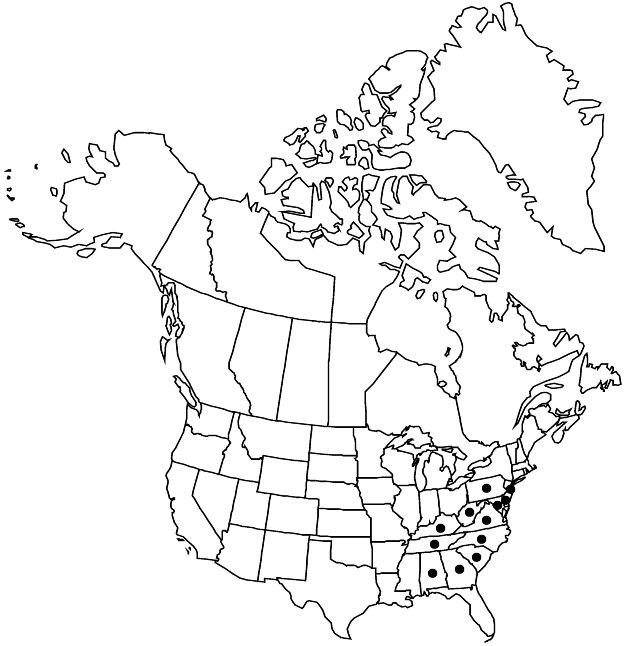Difference between revisions of "Hypericum densiflorum"
Fl. Amer. Sept. 2: 376. 1813.
FNA>Volume Importer |
FNA>Volume Importer |
||
| Line 16: | Line 16: | ||
|name=Hypericum glomeratum | |name=Hypericum glomeratum | ||
|authority=Small | |authority=Small | ||
| + | |rank=species | ||
}} {{Treatment/ID/Synonym | }} {{Treatment/ID/Synonym | ||
|name=H. interior | |name=H. interior | ||
|authority=Small | |authority=Small | ||
| + | |rank=species | ||
}} {{Treatment/ID/Synonym | }} {{Treatment/ID/Synonym | ||
|name=H. nothum | |name=H. nothum | ||
|authority=Rehder | |authority=Rehder | ||
| + | |rank=species | ||
}} {{Treatment/ID/Synonym | }} {{Treatment/ID/Synonym | ||
|name=H. prolificum var. densiflorum | |name=H. prolificum var. densiflorum | ||
|authority=(Pursh) A. Gray | |authority=(Pursh) A. Gray | ||
| + | |rank=variety | ||
}} | }} | ||
|hierarchy=Hypericaceae;Hypericum;Hypericum sect. Myriandra;Hypericum densiflorum | |hierarchy=Hypericaceae;Hypericum;Hypericum sect. Myriandra;Hypericum densiflorum | ||
| Line 49: | Line 53: | ||
-->{{#Taxon: | -->{{#Taxon: | ||
name=Hypericum densiflorum | name=Hypericum densiflorum | ||
| − | |||
|authority=Pursh | |authority=Pursh | ||
|rank=species | |rank=species | ||
| Line 64: | Line 67: | ||
|publication year=1813 | |publication year=1813 | ||
|special status=Endemic | |special status=Endemic | ||
| − | |source xml=https://jpend@bitbucket.org/aafc-mbb/fna-data-curation.git/src/ | + | |source xml=https://jpend@bitbucket.org/aafc-mbb/fna-data-curation.git/src/f50eec43f223ca0e34566be0b046453a0960e173/coarse_grained_fna_xml/V6/V6_120.xml |
|genus=Hypericum | |genus=Hypericum | ||
|section=Hypericum sect. Myriandra | |section=Hypericum sect. Myriandra | ||
Revision as of 22:02, 16 December 2019
Shrubs, erect, forming slender bush, 6–30 dm. Stems: internodes 4-lined at first, soon 2-lined to terete. Leaf blades narrowly elliptic-oblong or oblanceolate to linear, 20–45 × 2–7 mm, base articulated, narrowly cuneate to attenuate, margins recurved to revolute, apex apiculate-rounded to subacute, midrib with 14–17 pairs of branches. Inflorescences broadly pyramidal to broadly cylindric, 5–25-flowered from apical node, with (2–)5–15-flowered dichasia from 1–2 proximal nodes. Flowers 10–17(–20) mm diam.; sepals deciduous, not enclosing capsule, 5, narrowly oblong to oblanceolate-spatulate, unequal or subequal, 4–6 × 1–1.5 mm, basal veins 1–3; petals 5, deep golden yellow, obovate-oblanceolate, 6–9 mm; stamens deciduous, 100–150; ovary 3–4(–5)-merous. Capsules narrowly ovoid conic to cylindric-ovoid, 5–6(–7) × 2–3 mm, not or scarcely lobed. Seeds not carinate, 0.8–1.3 mm; testa linear-reticulate. 2n = 18.
Phenology: Flowering summer (Jun–Aug).
Habitat: Wet or moist habitats (meadows, lake margins, pinelands, etc.), road embankments, rocky hillsides
Elevation: 0–1000 m
Distribution

Ala., Del., Ga., Ky., Md., N.J., N.C., Pa., S.C., Tenn., Va., W.Va.
Discussion
Hybrid intermediates between Hypericum densiflorum and H. lobocarpum occur in northwestern Alabama, and a narrow-leaved, small-flowered form in Tennessee and northern Georgia (H. interior) verges toward H. galioides. Hypericum densiflorum is always distinct from H. prolificum in the wild; these species hybridize in gardens. Hypericum ×arnoldianum Rehder, known in cultivation only, was thought by Rehder to have the parentage H. galioides × lobocarpum; on both morphological and cytological grounds, the conclusion of W. P. Adams (1972) that it was H. densiflorum × lobocarpum seems much more likely.
Selected References
None.